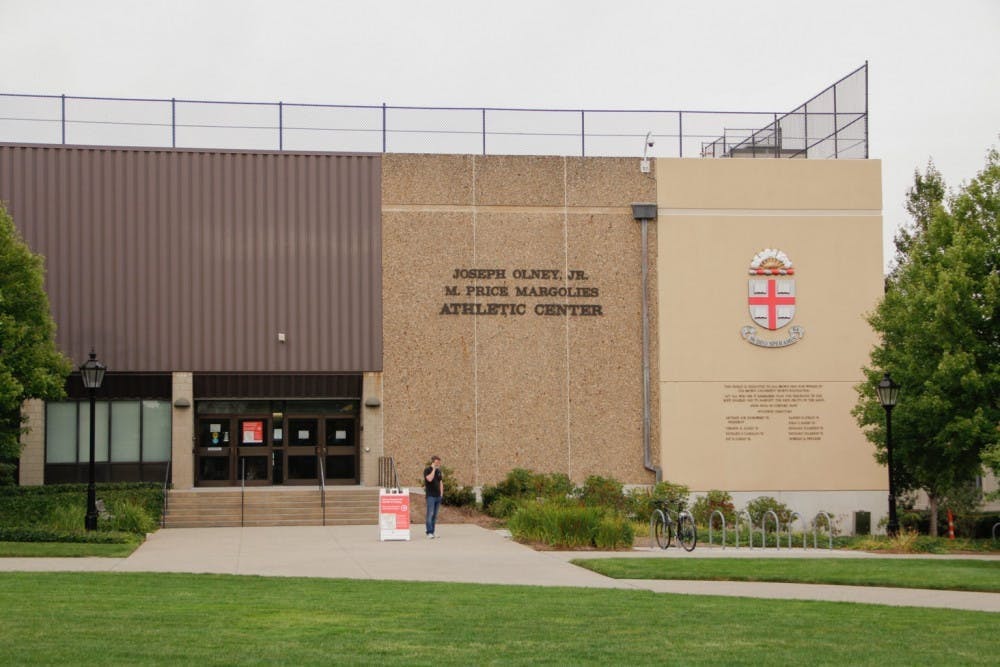Due to concerns about the cardiovascular health of student-athletes following COVID-19 infection, the University has implemented a seven-day reentry period for athletes, a process aimed to ease them back into high-intensity competition and ensure that they are physically ready to return.
"Providing for a safe reentry": policy at the department level
Back to play protocols are flexible based on the severity of cases, according to Colin Sullivan, deputy director of athletics. “There’s a baseline for the return to play,” he added. “But that could be extended based on whether it’s a mild, moderate or severe case.”
Because other Ivy League schools have comparable policies, Brown’s protocol doesn’t lead to any competitive disadvantages, according to Sullivan. “It’s all about providing for a safe reentry.”
Sullivan said that the process is informed by input from multiple levels of University staff. “The doctors in Health Services are working with our athletic training staff. Each of our teams has a designated athletic training contact,” he said. The process of reentry “is being very closely monitored, and decisions are being made at the athletic training and the medical level with guidance from our physicians here.”
He also emphasized that Brown’s guidance is influenced by a number of other authorities, including the NCAA, CDC and the Rhode Island Department of Health. So far, Sullivan is not aware of any severe cases among athletes, with most being mild or asymptomatic.
"Almost rewinding the clock": contending with COVID-19 in what was supposed to be a ‘normal’ season
For field hockey player Emma Rosen ’22, not being able to play after testing positive reminded herof last year’s cancelled season. “It was hard. Since (during) my junior year we didn’t really have any opportunities to play, I was really looking forward to my senior season. And literally just after having our first two games, I tested positive,” she said. “I felt like I was almost rewinding the clock, I was going back to when we weren’t allowed to play at all.”
But Rosen emphasized that her time away from the team made her appreciate being able to play even more. “It did give me kind of a new perspective when I came back, not taking a second or minute or anything for granted when I’m on the field,” she said.
Rosen’s field hockey teammate Celia Donner ’24 described being eased back in after her 10-day quarantine. “It was kind of a slow progression,” she said. “I just started with a 15 minute walk the first day and then slowly built up so that they could see how my heart reacted as my heart rate went up.”
Donner’s symptoms were mild and she had no difficulties going through the protocol. While the wait felt prolonged, especially relative to her mild symptoms, Donner acknowledged the neccesity of the protocols. “It was definitely frustrating feeling like there was nothing physically wrong with me but still not being able to practice fully,” she said. “But it definitely was good just to be on the safe side of things and make sure that I was completely okay before getting fully back into it.” For her, the main challenge was the fitness she lost while in quarantine. “The only thing that really affected me was that I hadn’t been able to work out during the 10 days so I definitely wasn’t in the same shape,” she said.
Rosen described the process as a gradual increase in allowable physical activity, starting at walks or light jogs in which her heart rate couldn’t exceed 130 beats per minute. The subsequent stages enabled her to slowly increase the intesity of her work outs. The completion of stage seven marked her official “graduation” from the protocols.
For Donner, the protocol was flexible to allow her some competitive opportunities. “The first five (or so) days of protocol we just had practices, so I did modified practice,” she said. “By the time we had more games I was able to play half of one of our games (and another) in full.”
The impact of COVID-19 cases on the team has made the season difficult, but the team has pushed through, according to Donner. “Our coaches have done the best they can with adjusting and our team is definitely very adaptable,” she said. “Everyone’s done a really good job of just staying flexible and doing the best we can.”
Rosen also appreciated the efforts her trainers made in helping her get back on the field. “I give our trainers a lot of credit, because I know my trainer really tried to help me move through the whole protocol as swiftly and smoothly as possible,” she said. “She didn’t want to rush through it, but she very much understood I was doing good and I really just wanted to get back out there.”
"Trying to do our best to protect our student athletes": how experts approach the situation
Dr. Hung Le, a staff physician who works in Health Services and has played a key role in crafting Brown’s COVID-19 return-to-play policies, outlined the medical rationale behind the protocols. “The impact (of) COVID-19 infection is still being understood when it comes to cardiac manifestations. And that’s really the main concern for why we have a return-to-play protocol,” he said. “There are reports of COVID-related cardiac complications, (but) that finding is very, very uncommon.”
While these cases are uncommon, there remains a risk of severe heart conditions, Le explained. “The biggest concern (we have) is that some patients have been documented, not at Brown but nationally, (with) heart inflammation called myocarditis that is associated with COVID infection,” he said. “And our concern is that if you have (myocarditis), it may lead to arrhythmias, which can be quite detrimental if you exert yourself at a high level.”
Due to the nature of the pandemic, policies are fluid, Le explained. “We’re always learning new information and we use that new information to drive protocols when it comes to return to play,” he said. “Our current policy is driven by professional organizations (and) expert consensus and opinion.”
He also added that a policy change is a possibility. “We are actively engaging in conversation about changing these guidelines for return to play,” he said. “There was a recently published updated recommendation by two professional organizations, the American College of Cardiology (and) the American Medical Society for Sports Medicine. These two organizations came together and modified guidelines for return to play following COVID infection.”
The new guidelines differ based on the nature of the COVID infection, Dr. Le explained. “An asymptomatic or mildly symptomatic patient may return to exercise as soon as three days following a positive test or symptom onset,” he said. “But that’s under the assumption that the symptoms are not cardiac or pulmonary-related symptoms. Once you have cardiac or pulmonary symptoms, then you have to be evaluated further before you get full clearance.”
“Ultimately, the possibility of COVID-related cardiac complications is the driving factor behind the decisions,” he said. “It can be complicated, but the reason why we’re doing this is to identify folks who may be at the highest risk of having a cardiac-related complication that may be associated with a COVID illness. We’re trying to do our best to protect our student-athletes.”

Peter Swope was the senior editor of digital engagement for The Brown Daily Herald's 133rd Editorial Board. He previously served as a Sports section editor and has also written stories for University News. Peter is a senior from New Jersey studying history.





